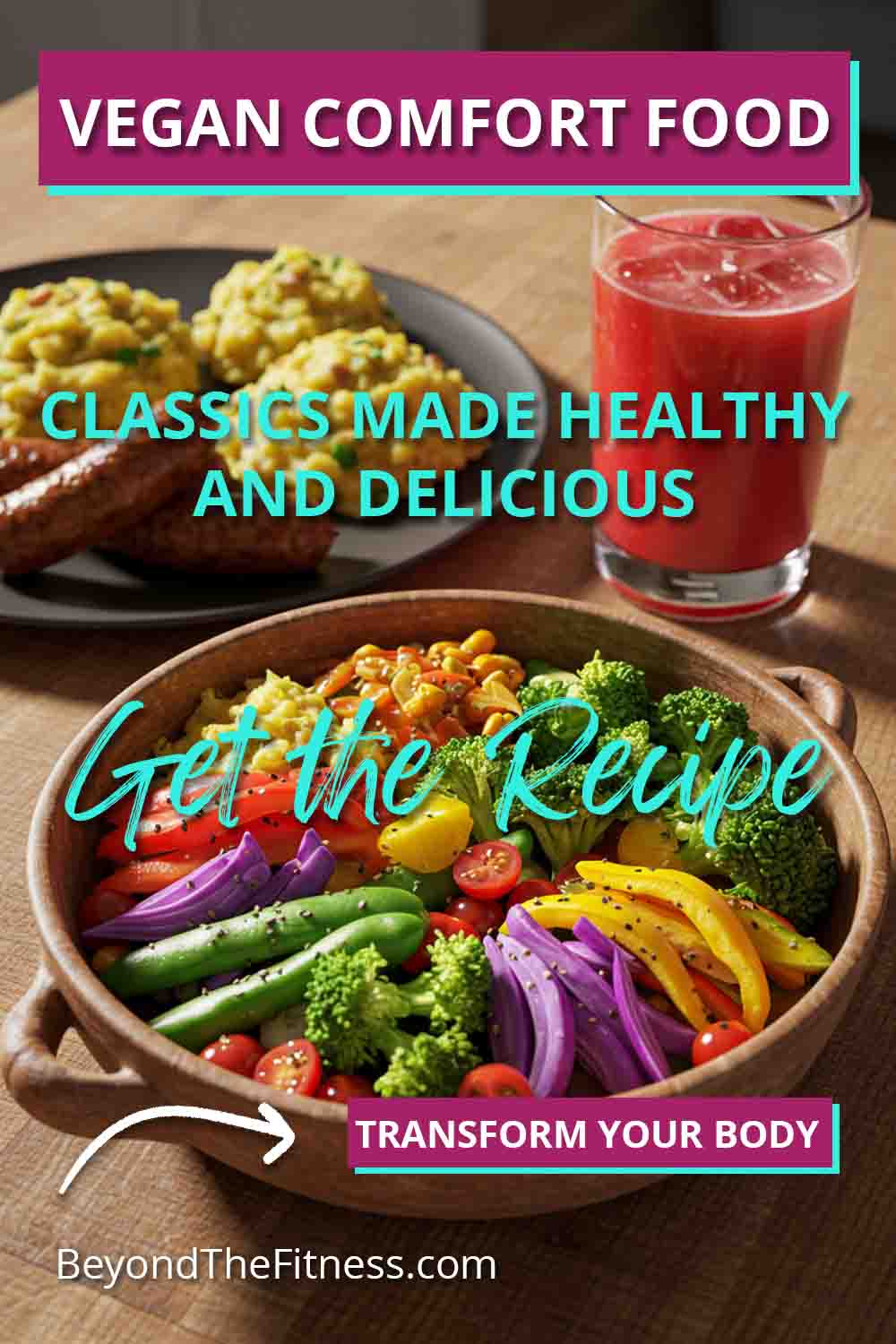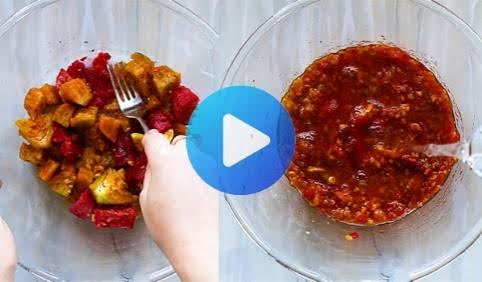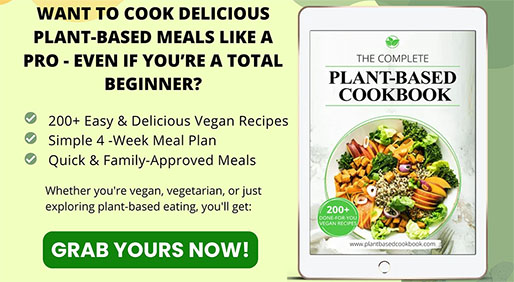Sometimes, all you want is a warm, cozy meal that feels like a hug. That’s comfort food. It often reminds us of childhood or special times. But many classic comfort foods are loaded with things that don’t help us reach our health and fitness goals, like lots of unhealthy fats, sugar, and salt. If you’re like me, working towards feeling strong and managing your weight, you might think comfort food is off-limits. Good news – it doesn’t have to be. We can enjoy those comforting feelings with food that also nourishes our bodies, especially when we explore vegan options.
Going vegan, or even just eating more plant-based meals, can be amazing for your health. It often means eating more fiber, vitamins, and minerals. These are things our bodies love. Eating less meat and dairy can also help lower the amount of saturated fat we eat, which is good for our hearts and can help with weight management. But just because something is vegan doesn’t automatically make it healthy. Vegan junk food exists too. Think oily fries, sugary vegan cookies, or processed fake meats. The trick is to focus on whole, plant-based ingredients to remake our favorite comfort foods in a way that supports our well-being.
Why Choose Healthy Vegan Comfort Food?
Choosing healthier versions of comfort foods is a smart move for anyone wanting to feel better and manage their weight. Traditional comfort foods often lead to feeling sluggish or overly full. They can be high in calories but low in nutrients. This means they don’t give our bodies the good stuff needed for energy and repair.
Healthy vegan comfort foods flip this around. By using plants, we naturally increase fiber. Fiber is fantastic. It helps us feel full longer, which can stop us from overeating. It’s also great for digestion. Think about how much better you feel when your digestive system is happy. Plant-based meals are also often lower in calories than their meat-and-dairy counterparts, making it easier to manage weight without feeling deprived.
Insider Tip: Enjoying Healthy and Flavorful Plant-Based Dishes with The Complete Plant Based Recipe Cookbook
For women especially, focusing on nutrient-rich plant foods is important. We need things like iron for energy, calcium for strong bones, and folate. Healthy vegan meals can be packed with these. Leafy greens, beans, lentils, nuts, and seeds are powerhouses of nutrition. When we remake comfort foods using these ingredients, we’re not just satisfying a craving; we’re fueling our bodies effectively. This fuel is exactly what we need for workouts, for busy days, and for feeling energetic overall.
Making Vegan Comfort Food Healthy: The Basics
So, how do we take a classic, often heavy, comfort dish and make it both vegan and healthy? It’s about smart swaps and focusing on whole foods.
- Whole Ingredients are Key: Instead of processed vegan cheeses or meats, we lean on whole foods. Think vegetables, fruits, legumes (beans, lentils, peas), whole grains (like brown rice, quinoa, oats), nuts, and seeds. These ingredients bring nutrients and fiber.
- Boost the Veggies: Almost any comfort dish can handle more vegetables. Adding extra veggies increases vitamins, minerals, and fiber, making the dish more filling and nutritious without adding lots of calories. Think adding spinach to pasta sauce, mushrooms to chili, or extra carrots and celery to stews.
- Healthy Fats: Not all fat is bad. We need healthy fats. Good sources in vegan cooking include avocados, nuts, seeds (like chia, flax, and hemp), and olives or olive oil (used sparingly). We want to limit saturated and trans fats often found in processed foods, fried foods, and animal products.
- Smart Sweeteners: Many comfort foods, especially desserts, are high in refined sugar. We can use natural sweeteners like dates, maple syrup, or fruit purees in moderation. These often bring a little extra nutrition along with the sweetness.
- Cooking Methods Matter: How we cook food changes its health profile. Baking, steaming, grilling, roasting, or air frying are usually healthier than deep frying. Sautéing with minimal water or broth instead of lots of oil is another great trick.
- Flavor with Herbs and Spices: Instead of relying on salt and fat for flavor, get creative with herbs, spices, garlic, onions, and citrus juices. These add amazing taste without the downsides. Nutritional yeast is a vegan favorite for adding a cheesy, savory flavor without dairy.
Now, let’s look at some specific comfort food classics and how we can give them a healthy vegan makeover.
Healthy Vegan Mac and Cheese
Mac and cheese is probably high on many comfort food lists. The traditional kind, though, is often swimming in heavy cream, butter, and cheese – lots of saturated fat and calories. My healthy vegan version is creamy, cheesy-tasting, and satisfying, but much kinder to your body.
The Problem with Traditional: High in saturated fat, refined carbs (white pasta), sodium, and calories. Low in fiber and micronutrients. Can lead to energy crashes.
The Healthy Vegan Solution:
- The Sauce: Forget dairy. The magic happens with plants. My favorite base is a blend of soaked cashews (for creaminess and healthy fats), nutritional yeast (for that cheesy flavor and B vitamins), and sometimes cooked butternut squash or sweet potato (for color, creaminess, and extra nutrients like Vitamin A). Blending these with a little unsweetened plant milk (like almond or soy), garlic, onion powder, and a pinch of salt creates an incredibly rich sauce. Another option is using silken tofu as a base for a lower-fat version.
- The Pasta: Swap out white pasta for whole wheat pasta. This adds fiber and B vitamins, giving you more sustained energy. You can also use pasta made from lentils or chickpeas for a protein boost, or even spiralized vegetables like zucchini or squash for a very low-carb, high-nutrient option.
- Add-Ins: Boost the nutrition by stirring in steamed broccoli florets, peas, or spinach into the finished dish. You can also top it with whole-grain breadcrumbs mixed with a little olive oil and herbs, then bake it for a crunchy topping.
Why It’s Better: This version provides healthy fats from cashews, B vitamins from nutritional yeast, fiber from whole wheat pasta or veggies, and extra vitamins from any added vegetables. It’s much lower in saturated fat and provides more stable energy. It supports heart health and weight management goals while still delivering that creamy, comforting experience.
Healthy Vegan Shepherd’s Pie
Shepherd’s Pie is a hearty, warming dish. Traditionally, it features ground meat in gravy, topped with buttery mashed potatoes. Delicious, yes, but often heavy and high in fat. My vegan version uses lentils or mushrooms for a savory filling and a lighter, nutrient-packed topping.
The Problem with Traditional: High in saturated fat (from meat and butter), often high in sodium, and the white potato topping provides quick-burning carbs without much fiber.
The Healthy Vegan Solution:
- The Filling: Instead of ground meat, I use lentils (brown or green work well) or finely chopped mushrooms, or a mix of both. These provide plant-based protein and tons of fiber. I cook them with onions, carrots, celery, and peas in a savory vegetable broth thickened slightly with a little cornstarch or arrowroot powder. Herbs like thyme and rosemary add classic flavor. Using low-sodium vegetable broth helps control salt intake.
- The Topping: Swap the buttery white potato mash for something more nutritious. Mashed sweet potatoes are a fantastic option – they bring Vitamin A, fiber, and a lovely natural sweetness. Mashed cauliflower is another great choice, much lower in carbs and calories but still creamy and satisfying. You can also do a mix of cauliflower and potato. Season the mash with nutritional yeast, garlic powder, and a touch of unsweetened plant milk instead of butter and cream.
- Assembly: Layer the lentil-veggie filling in a baking dish, spread the healthy mash on top, and bake until bubbly and lightly browned.
Why It’s Better: This pie is packed with fiber and plant-based protein from the lentils, helping you feel full and satisfied. Protein is crucial for muscle repair, especially if you’re active. The sweet potato or cauliflower topping adds significant vitamins and minerals compared to white potatoes. It’s much lower in saturated fat and sodium. This version supports digestive health, provides sustained energy, and fits well into a weight management plan.
Healthy Vegan Chili
A big bowl of chili can be incredibly comforting, especially on a cold day. Traditional chili often relies on ground meat, which can add a lot of saturated fat. Vegan chili is easy to make healthy and is naturally loaded with good stuff.
The Problem with Traditional: Can be high in saturated fat and sodium, often served with high-fat toppings like sour cream and cheese.
The Healthy Vegan Solution:
- The Base: Beans are the star here. Use a variety like kidney beans, black beans, and pinto beans. They are packed with fiber and plant-based protein. Add lots of vegetables – onions, bell peppers (various colors), zucchini, corn, and diced tomatoes.
- The Flavor: Use chili powder, cumin, smoked paprika, oregano, garlic, and maybe a pinch of cocoa powder for depth. Build flavor with these spices instead of relying on fat or excess salt. Using canned tomatoes (no salt added) and low-sodium vegetable broth helps keep sodium levels in check.
- Make it Hearty: Add whole grains like quinoa or bulgur to the chili while it simmers to make it even more filling and add complex carbohydrates for energy.
- Healthy Toppings: Instead of dairy sour cream and cheese, offer healthy toppings like diced avocado (healthy fats), chopped cilantro, a squeeze of lime juice, or a dollop of unsweetened vegan yogurt.
Why It’s Better: This chili is a fiber powerhouse, promoting digestive health and keeping you full for hours. The beans provide ample protein. It’s rich in vitamins and minerals from all the vegetables. By controlling the sodium and using healthy toppings, it becomes a fantastic meal for heart health and weight management. The sustained energy release from the complex carbs and fiber is great for fueling workouts or just getting through a busy day without energy dips.
Healthy Vegan Burgers
Who doesn’t love a good burger? But traditional beef burgers can be high in saturated fat and calories. Vegan burgers can be incredibly delicious and much healthier when made from whole ingredients.
The Problem with Traditional: High in saturated fat, often served on refined white buns with high-fat sauces and cheese.
The Healthy Vegan Solution:
- The Patty: Skip the processed fake meats, which can sometimes be high in sodium and additives. Make your own patties from whole foods. Great bases include black beans, chickpeas, lentils, mushrooms, quinoa, or sweet potatoes. Mash your base ingredient, then mix in binders like oats or whole-wheat breadcrumbs, and lots of flavor boosters like chopped onions, garlic, herbs (parsley, cilantro), and spices (cumin, paprika). Form into patties.
- Cooking Method: Bake or pan-fry the patties with minimal oil instead of deep frying or grilling with lots of added fat.
- The Bun: Choose whole-grain buns for extra fiber. Or, skip the bun altogether and serve the patty in a lettuce wrap or over a salad.
- The Toppings: Load up on fresh veggie toppings like lettuce, tomato, onion, and pickles. Use healthier sauces like mustard, salsa, guacamole, or a homemade cashew-based aioli instead of sugary ketchup or high-fat mayo. Skip the dairy cheese or use a slice of a nut-based vegan cheese sparingly.
Why It’s Better: Homemade veggie burgers are significantly lower in saturated fat and often higher in fiber than meat burgers. They provide plant-based protein and complex carbohydrates. Choosing a whole-grain bun or lettuce wrap further boosts the health factor. This allows you to enjoy the burger experience in a way that aligns with fitness and weight goals, providing nutrients without the heavy feeling.
Healthy Vegan “Meatloaf”
Meatloaf is another comfort food staple. Like burgers, the traditional version is usually made with fatty ground meat and sometimes sugary glazes. A vegan lentil loaf is a fantastic, hearty, and healthy alternative.
The Problem with Traditional: High in saturated fat, sodium, and sometimes added sugar in the glaze.
The Healthy Vegan Solution:
- The Loaf: Cooked lentils (brown or green) make an excellent base, providing protein and fiber. Mash some of the lentils and leave some whole for texture. Mix with finely chopped sautéed vegetables like onions, carrots, celery, and mushrooms. Use binders like rolled oats or whole-grain breadcrumbs. Season well with herbs like thyme, sage, and savory, plus garlic and onion powder. A little bit of tomato paste adds depth.
- The Glaze: Instead of a sugary ketchup glaze, make your own healthier version. Mix tomato paste with a touch of balsamic vinegar or maple syrup, and some herbs. Spread thinly over the loaf before baking.
- Baking: Press the mixture firmly into a loaf pan and bake until firm and cooked through. Let it rest for a few minutes before slicing, which helps it hold together.
Why It’s Better: This lentil loaf is rich in fiber and plant-based protein, making it very filling and satisfying. It’s much lower in saturated fat than traditional meatloaf. The focus on vegetables and whole grains boosts its nutrient content. It’s a great way to get iron and folate. This dish provides steady energy and supports muscle health, making it a comforting yet smart choice.
Healthy Vegan Chocolate Pudding or Mousse
Comfort food isn’t just savory; sometimes we crave something sweet and creamy. Traditional chocolate pudding or mousse often relies on heavy cream, eggs, and lots of sugar. Healthy vegan versions can be surprisingly decadent using clever ingredients.
The Problem with Traditional: High in sugar, saturated fat, and calories. Offers little nutritional value.
The Healthy Vegan Solution:
- The Creamy Base: Avocado is a secret weapon for creamy vegan desserts. Blend ripe avocado with cocoa powder, a liquid sweetener like maple syrup or date paste, a splash of plant milk, and vanilla extract. The avocado provides healthy fats and an incredibly smooth texture – you won’t taste the avocado, just rich chocolate. Another option is using silken tofu, which creates a lighter, high-protein mousse when blended with cocoa and sweetener. Chia seed pudding is another route: mix chia seeds with plant milk, cocoa powder, and sweetener, and let it sit until thickened.
- The Sweetener: Use natural sweeteners like maple syrup, date paste, or agave nectar in moderation. Start with less and add more to taste.
- Flavor Boosts: Add a pinch of salt to enhance the chocolate flavor, or a little espresso powder.
Why It’s Better: These versions offer nutritional benefits alongside the sweetness. Avocado provides healthy monounsaturated fats and fiber. Silken tofu offers plant-based protein. Chia seeds are packed with fiber, omega-3 fatty acids, and protein. By controlling the amount and type of sweetener, you can satisfy a sweet craving without the sugar crash and empty calories of traditional pudding. It’s a way to enjoy dessert while still giving your body some goodness.
Tips for Enjoying Healthy Vegan Comfort Food
Making the switch to healthier comfort food is easier with a few strategies:
You Might Be Interested In: Exploring Delicious Vegan Recipes With This Cookbook
- Plan Ahead: Decide which healthy comfort meals you want to try during the week. Shop for the whole food ingredients you’ll need.
- Batch Cook: Many of these dishes, like chili or lentil loaf, are great for making in larger batches. Eat some now and freeze portions for later for quick, healthy meals.
- Read Labels: If using any packaged goods (like plant milk, canned tomatoes, or breadcrumbs), check the labels for added sugars, sodium, and unhealthy fats. Choose options with simple, recognizable ingredients.
- Listen to Your Body: Pay attention to your hunger and fullness signals. Eat when you’re hungry and stop when you’re satisfied, not overly stuffed. Healthy comfort food should make you feel good, energized, and nourished.
- Don’t Aim for Perfection: It’s okay to enjoy traditional comfort foods sometimes. The goal is progress, not perfection. Focus on making healthier choices most of the time. Incorporating these nutritious vegan versions more often is a big step in the right direction.
Fueling Your Fitness and Wellness
Eating these healthy vegan comfort foods does more than just satisfy cravings. It directly supports your fitness journey and overall well-being. The complex carbohydrates from whole grains, beans, and vegetables provide sustained energy for workouts and daily life. The plant-based protein helps repair and build muscle tissue after exercise. The fiber keeps your digestive system running smoothly and helps manage weight by promoting fullness.
The vitamins and minerals abundant in these plant-based dishes – like iron for oxygen transport (pair plant sources with vitamin C like citrus or bell peppers for better absorption), calcium for bone health (found in leafy greens, fortified plant milks, tofu), and antioxidants to fight inflammation – all contribute to feeling your best. When you nourish your body well, even with comfort food, you have more energy, recover faster, and are better equipped to reach your health and weight goals. It proves that eating well doesn’t mean giving up the foods that bring you joy and comfort. It just means finding smarter, healthier ways to enjoy them.
Related YouTube Video
Final Thoughts
Finding ways to enjoy comforting meals while still taking care of our bodies is so important. It makes healthy eating feel sustainable and enjoyable, not like a punishment. These healthy vegan versions of classic comfort foods show that you can have food that feels like a warm hug and nourishes you from the inside out. By focusing on whole plant ingredients, smart cooking methods, and lots of flavor from herbs and spices, we can create meals that support our energy levels, fitness goals, and weight management efforts. It’s about making choices that help us feel strong, vibrant, and happy, one delicious, comforting meal at a time.







